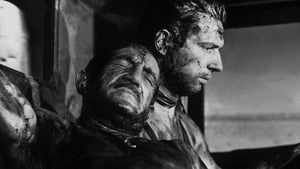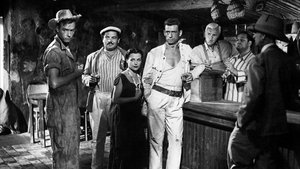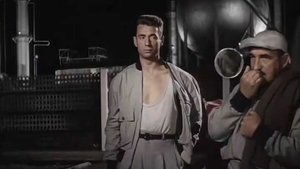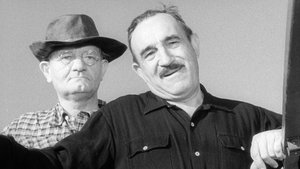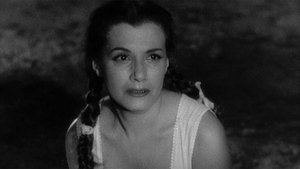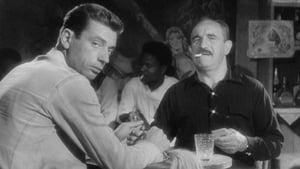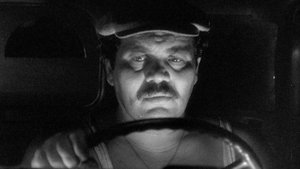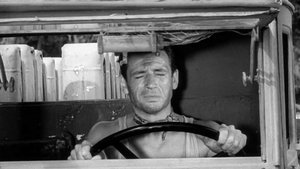Contact: [email protected]
Video Sources 0 Views
- Watch trailer
- The Wages of Fear

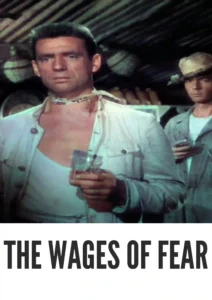
Synopsis
Table of Contents
ToggleReview: The Wages of Fear 1953 – Exploring the Impact of Early Colorization

Introduction
In the annals of cinematic history, few films have achieved the level of tension and intensity as The Wages of Fear. Directed by Henri-Georges Clouzot and released in 1953, this gripping thriller has mesmerized audiences for decades with its harrowing narrative and breathtaking cinematography. However, our examination today extends beyond traditional film critique. We delve into the realm of early colorization and its implications on the viewing experience of The Wages of Fear 1953. In this article, we embark on a journey through time, dissecting the significance of colorization in the context of film history and analyzing how it alters our perception of this cinematic masterpiece.
Check The Full Colorized Movies List
Check Our Colorized Movies Trailer Channel
Understanding The Wages of Fear 1953: Director, Cast, and Genre
The Wages of Fear 1953 stands as a testament to the directorial genius of Henri-Georges Clouzot, who crafted a masterpiece that transcends genre boundaries. The film features a stellar ensemble cast, including Yves Montand as the desperate truck driver Mario, Charles Vanel as the world-weary Bimba, and Folco Lulli as the hot-headed Luigi. Together, they navigate a treacherous journey through the South American jungle, facing peril at every turn. The Wages of Fear 1953 defies categorization, blending elements of suspense thriller, adventure drama, and existential horror to create an unforgettable cinematic experience.
Exploring the World of The Wages of Fear 1953: Plot and Characters
At its core, The Wages of Fear 1953 is a heart-stopping tale of desperation and survival. The film follows four men hired to transport a volatile shipment of nitroglycerin across rugged terrain to extinguish a raging oil well fire. As they embark on their perilous journey, they must confront their deepest fears and overcome seemingly insurmountable obstacles to reach their destination. Along the way, they grapple with the fragility of human life and the depths of human depravity, in a cinematic tour de force that leaves audiences breathless.
The Art of Film Colorization
Film colorization is a process by which black and white films are digitally enhanced with color, offering audiences a fresh perspective on classic cinema. While controversial, it has become increasingly prevalent in recent years, with many filmmakers embracing it as a way to breathe new life into timeless classics.
Early Colored Films: A Brief History
The history of early colored films is as colorful as the hues themselves. From hand-painted frames to pioneering technicolor techniques, filmmakers have long sought to capture the vibrancy of the world on celluloid. While early colored processes were often crude and labor-intensive, they paved the way for the dazzling visual effects and digital wizardry that define modern cinema.
The Wages of Fear 1953 and Its Early Colored Version
The decision to release The Wages of Fear 1953 in a colorized format was met with both anticipation and apprehension. On one hand, it offered audiences a chance to experience Clouzot’s masterpiece in a new light, with vibrant colors enhancing the film’s visual and emotional impact. On the other hand, purists feared that colorization would detract from the film’s stark aesthetic and dilute its tension-filled atmosphere. Ultimately, whether one prefers the original black and white version or the colorized edition is a matter of personal preference. However, the colorized version offers a fresh perspective on The Wages of Fear 1953, allowing audiences to see familiar scenes in a new light and perhaps discover new depths to the film’s visual and emotional impact.
The Debate Over Film Colorization
The debate surrounding film colorization has raged for decades, with proponents praising its ability to breathe new life into classic films and make them more accessible to modern audiences, while purists argue that it compromises the artistic integrity of the original work. The controversy continues to divide filmmakers and audiences alike, with no clear consensus in sight.
Examining The Wages of Fear 1953 as an Early Colored Film
Viewing The Wages of Fear 1953 in its early colored iteration offers a unique viewing experience. While the colorization adds a layer of visual richness to the film, some may argue that it detracts from the stark realism and tension-filled atmosphere of the original black and white version. However, others may appreciate the opportunity to see familiar scenes in a new light, with vibrant colors enhancing the film’s visual and emotional impact. Ultimately, the choice of whether to watch The Wages of Fear 1953 in black and white or colorized format is a matter of personal preference.
Influence and Legacy: The Wages of Fear 1953’s Impact on Cinema
The Wages of Fear 1953 has left an indelible mark on the cinematic landscape, inspiring generations of filmmakers and influencing countless works of art across various mediums. Its enduring legacy speaks to the timeless nature of its themes and the power of storytelling to resonate with audiences across generations.
Director’s Cinematic Legacy: Beyond The Wages of Fear 1953
Henri-Georges Clouzot’s impact on cinema extends far beyond The Wages of Fear 1953. Throughout his illustrious career, he pushed the boundaries of conventional filmmaking, crafting masterpieces that continue to captivate audiences to this day. His bold storytelling and uncompromising vision have inspired generations of filmmakers, leaving an indelible mark on the world of cinema.
Themes Explored in The Wages of Fear 1953
At its core, The Wages of Fear 1953 explores themes of desperation, survival, and the human condition. Through its gripping narrative and unforgettable characters, the film offers a searing indictment of the human psyche and the lengths to which people will go in the face of imminent danger.
Reception and Controversy Surrounding The Wages of Fear 1953
The release of the colorized version of The Wages of Fear 1953 sparked a flurry of debate among critics and audiences alike. While some praised the film’s newfound visual splendor, others lamented the loss of its stark black and white aesthetic. Despite the controversy, the film remains a beloved classic, standing the test of time as a testament to Clouzot’s directorial prowess and the enduring power of cinema.
Where to Watch The Wages of Fear 1953 Online
For those eager to experience The Wages of Fear 1953 for themselves, the film is readily available on popular streaming platforms such as Netflix, Amazon Prime, and Hulu. Whether viewed in its original black and white format or its early colored iteration, The Wages of Fear 1953 continues to captivate audiences with its gripping narrative and breathtaking cinematography, cementing its status as a true classic of the silver screen.
FAQs About The Wages of Fear 1953
1. Is The Wages of Fear 1953 based on a true story?
The Wages of Fear 1953 is a work of fiction inspired by real-life events and experiences. While the film’s storyline is not directly based on a specific true story, it draws inspiration from the human condition and the perils of the human psyche to craft its gripping narrative.
2. Who directed The Wages of Fear 1953?
The Wages of Fear 1953 was directed by Henri-Georges Clouzot, a visionary filmmaker known for his uncompromising vision and bold storytelling. Clouzot’s masterful direction and breathtaking cinematography elevate The Wages of Fear 1953 to cinematic greatness, making it a standout example of his cinematic oeuvre.
3. What is the central conflict of The Wages of Fear 1953?
At its core, The Wages of Fear 1953 revolves around the central conflict between the characters’ desperate bid for survival and the myriad obstacles they face along the way. As they navigate treacherous terrain and confront their deepest fears, they must grapple with their own mortality and the fragility of human life.
4. What sets The Wages of Fear 1953 apart from other thrillers of its time?
The Wages of Fear 1953 stands out from other thrillers of its time due to its gripping narrative, breathtaking cinematography, and unforgettable characters. Director Henri-Georges Clouzot’s masterful direction and the film’s existential themes elevate it to cinematic greatness, leaving a lasting impression on audiences worldwide.
5. What is the significance of the film’s early colored version?
The early colored version of The Wages of Fear 1953 offers audiences a fresh perspective on a cinematic masterpiece, allowing them to see familiar scenes in a new light. While some purists may prefer the original black and white version, the colorized edition provides an opportunity to experience Clouzot’s vision in a new way, with vibrant colors enhancing the film’s visual and emotional impact.
6. How does the colorization process affect the film’s visual aesthetic?
The colorization process adds a layer of visual richness to The Wages of Fear 1953, enhancing the film’s overall visual appeal. However, some purists argue that it detracts from the stark realism and tension-filled atmosphere of the original black and white version. Ultimately, whether one prefers the original black and white version or the colorized edition is a matter of personal preference.
7. What is the legacy of The Wages of Fear 1953?
The Wages of Fear 1953 has left an indelible mark on the cinematic landscape, inspiring generations of filmmakers and influencing countless works of art across various mediums. Its enduring legacy speaks to the timeless nature of its themes and the power of storytelling to resonate with audiences across generations.
8. Are there any sequels or remakes of The Wages of Fear 1953?
While there are no direct sequels or remakes of The Wages of Fear 1953, the film has inspired numerous works of art across various mediums, including literature, television, and music. Its influence can be seen in everything from pulse-pounding thrillers to thought-provoking dramas, cementing its status as a true classic of the silver screen.
9. Where can I watch The Wages of Fear 1953 online?
For those eager to experience The Wages of Fear 1953 for themselves, the film is readily available on popular streaming platforms such as Netflix, Amazon Prime, and Hulu. Whether viewed in its original black and white format or its early colored iteration, The Wages of Fear 1953 continues to captivate audiences with its gripping narrative and breathtaking cinematography, cementing its status as a true classic of the silver screen.
Conclusion
In conclusion, The Wages of Fear 1953 remains a cinematic masterpiece, regardless of its colorized iteration. While the debate over film colorization continues to divide audiences, one thing remains clear: Henri-Georges Clouzot’s visionary direction and breathtaking cinematography elevate The Wages of Fear 1953 to cinematic greatness. Whether viewed in its original black and white format or its early colored version, the film continues to captivate audiences with its gripping narrative and unforgettable characters, leaving a lasting impression that transcends time and space. As audiences continue to revisit this cinematic gem for generations to come, its legacy will endure, inspiring countless filmmakers and captivating audiences with its timeless tale of desperation, survival, and the human condition. Ultimately, the choice of whether to watch The Wages of Fear 1953 in black and white or colorized format is a matter of personal preference. However, what remains undeniable is the film’s ability to enthrall and engage audiences, making it a true classic of the silver screen.
